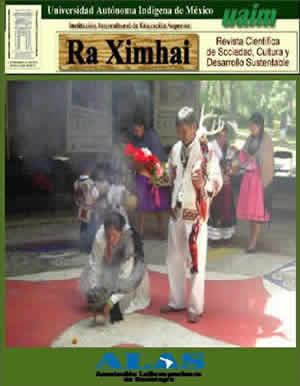Education for peace as a transversal axis at the secondary level
DOI:
https://doi.org/10.35197/rx.08.01.e.2012.03.cmKeywords:
educational practice, transversality, methodologyAbstract
Peace education is very important in our lives, as it prepares us to be actors of peace in a world so convulsed by increasing manifestations of violence, in all its forms. The principles of Peace Education must be a fundamental part of the educational practice of all educational systems and its methodology must be recognized, understood and implemented to achieve the objectives not only of the curricula but of a comprehensive and more humane education. In the Mexican educational context, there is evidence of progress in the treatment of Peace Education as a transversal axis in the Upper Secondary Level.
Downloads
References
• ABBAGNANO, N y A. Visalberghi.2009. Historia de la pedagogía. FCE. México.
• ADAM, Eva, Jaume Cela, et.al. 2008. Emociones y educación. Qué son y como intervenir en la escuela. GRAO. EDITORIAL LABORATORIO EDUCATIVO. España.
• ALVAREZ, Ma. Nieves, Neus Balaguer, et.al. 2000. Valores y temas transversales en el currículum. Editorial Laboratorio Educativo. GRAÓ. España.
• BUSQUETS, May. Dolores, Manuel Cainzos, et.al. 1993. Los temas transversales. Aula XXI. SANTILLANA. Madrid.
• CAMPS, Victoria. 1990. Virtudes públicas. ESPASA CALPE. Barcelona
• FISAS ARMENGOL, Vicenç. 1987. Introducción al estudio de la paz y los conflictos. LERNA. España.
• DAROS, W.R. 2004. Filosofía de una teoría curricular. IUNIR. INSTITUTO UNIVERSITARIO ITALIANO DE ROSARIO. Argentina.
• DICCIONARIO DE LAS CIENCIAS DE LA EDUCACIÓN. t.I 1990 SANTILLANA. México.
• DOMINGUEZ, Oscar. 2004. “El amor a la ñ” en la Jornada Semanal. No. 509, Domingo 5 de diciembre.
• FREIRE, Paulo. 1970. Pedagogía del oprimido. FCE. México.
• GONZALEZ LUCINI, Fernando. 1994. Temas transversales y educación en valores. ANAYA. Madrid.
• HABERMAS, J. 1985. “Desarrollo de la moral e identidad del yo”. En Conciencia moral y acción comunicativa. PENÍNSULA. Barcelona.
• HARRIS, Ian. 1995. “Peace Pedagogy”. En el Dossier del Master Internacional para la paz y el desarrollo. 1987. Fundación Bancaixa-UJI. Castellón de la Plana.
• IGLESIAS DÍAZ, Calo. 1999. Educar para la paz desde el conflicto. HOMO SAPIENS EDICIONES. Rosario.
• KOLBERG, L. 1982. “Estadios morales y moralización. El enfoque cognitivo-evolutivo” En Infancia y aprendizaje. PENÍNSULA. Barcelona.
• MARTÍNEZ GUZMÁN, Vicent. 2004. Podemos hacer las paces. Colección Ética Aplicada. DESCLÈE. Castellón.
• MARZANO, Robert. 1997. Dimensiones del aprendizaje. ITESO. México.
• MARTÍNEZ REAL, Concepción Noemí, et.al. 2008. Antropología: hombre, cultura y
sociedad. Universidad Autónoma del Estado de México. México.
• MONCLÚS, Antonio y Carmen Sabán.1999. Educación para la paz. SINTESIS. España.
• LOPEZ MARTINEZ, Mario. Dir.(2004 Enciclopedia de Paz y Conflictos. Eirene. INSTITUTO DE LA PAZ Y LOS CONFLICTOS. UNIVERSIDAD DE GRANADA. España.
• ORTEGA, Pedro, Ramón Mingues, et.al. 1996. Valores y Educación. ARIEL. Barcelona.
• OSHO.2004. Conciencia femenina, experiencia femenina. EDAF. España.
• REYZÁBAL, María Victoria y Ana Isabel Sanz. 1999. Los ejes transversales. Aprendizajes para la vida. Editorial Escuela Española. Madrid.
• SABATER, Nora. 1998. Pregúntale a Gurdjieff. TIKAL. México.
• SEGARRA, M. y Carabi, A. 2001. Nuevas masculinidades. PENÍNSULA. Barcelona.
• STANFORD Gene y Albert Roark. 1995. Por una Educación más humana. PAIDOS. Barcelona.
Downloads
Published
How to Cite
Issue
Section
License
Copyright (c) 2012 Concepción Noemí Martínez Real

This work is licensed under a Creative Commons Attribution-NonCommercial 4.0 International License.
Usted es libre de:
- Compartir — copiar y redistribuir el material en cualquier medio o formato
- Adaptar — remezclar, transformar y construir a partir del material
- La licenciante no puede revocar estas libertades en tanto usted siga los términos de la licencia
Bajo los siguientes términos:
- Atribución — Usted debe dar crédito de manera adecuada , brindar un enlace a la licencia, e indicar si se han realizado cambios . Puede hacerlo en cualquier forma razonable, pero no de forma tal que sugiera que usted o su uso tienen el apoyo de la licenciante.
- NoComercial — Usted no puede hacer uso del material con propósitos comerciales .
- No hay restricciones adicionales — No puede aplicar términos legales ni medidas tecnológicas que restrinjan legalmente a otras a hacer cualquier uso permitido por la licencia.








